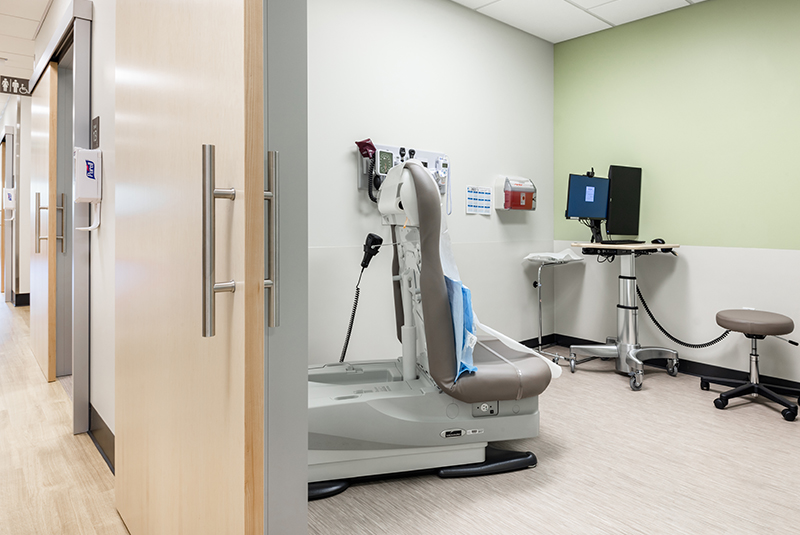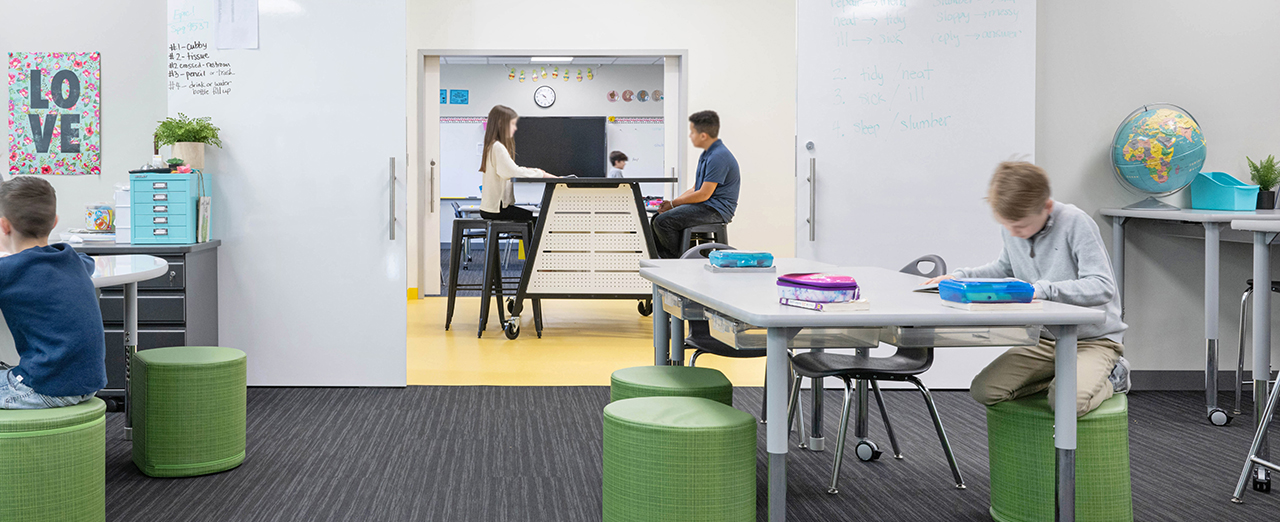
While architects often look to these doors to solve immediate spatial constraint challenges, such as narrow hallways in offices, schools, healthcare settings and more, the ability for commercial sliding doors to create space-efficiencies can facilitate more design freedom, which can lead to more unique interiors and more satisfied project owners. The following will provide brief overviews of how architects have used this quality to bring added value to their projects.
In healthcare sliding doors allow more exam rooms
Space is valuable commodity in healthcare settings, especially as medical centers increase the number of services they provide. Healthcare sliding doors help optimize space efficiency in exam rooms, patient rooms, corridors and more.
For example, the architects behind the renovation of the Gately-Ryan Building in Renton, Wash., used the space they saved by specifying sliding doors to create an additional exam room for every 11 originally planned. More rooms gave the medical center more flexibility and a higher patient capacity. But exam rooms are not the only places healthcare sliding doors can be used. They can be used in almost every part of the built environment to support space efficiency and design freedom.
Design spaces between spaces with commercial sliding doors for schools
In addition to healthcare, sliding doors can also support cutting-edge designs in educational settings. Because commercial sliding doors for schools can achieve Noise Isolation Class (NIC) ratings of up to 39, they can provide acoustic isolation when needed. They also support wide openings for more flexible classroom design—as indicated in their use at the Thacher School in Ojai, Cali.
These doors help facilitate designs that prioritize multiple modes of learning as well as increased student safety. This was the primary concept behind John Diemer Elementary School’s classroom layout. The architects planned a space between classrooms that housed restrooms, storage and areas for student collaboration. These “Co-Labs” also doubled as shelter-in-place locations during emergencies. As Duane Cash, the principal architect for the school, states “This design solved issues from past projects. It’s a big step forward for architects trying to balance education goals and a sense of safety and security for children.”
Commercial sliding doors for schools and offices support the use of breakout spaces
Because sliding doors can offer premium acoustic performance they can support breakout spaces within larger rooms. In educational settings, these spaces allow for independent study, student-teacher meetings, groupwork and more without being distracted by noise transfer. Breakout spaces can also be used in offices to facilitate collaboration or to protect sensitive information from being overheard.
Without the need to plan for swing arc trajectories, architects can arrange these spaces along busy corridors or within narrow hallways. When wall space is too limited to specify standard sliding door systems, designers can look to custom products, like AD Systems’ telescoping door systems. These systems stack door leaves to maximize opening widths for breakout spaces in areas with minimal wall space.
Space-efficiency leads to design freedom
Commercial sliding doors for schools, healthcare and offices can minimize swing arc and approach clearances, leading to more efficient designs that are more accommodating for those with accessibility needs. Often, this benefit adds enough value to a project to warrant their specification. Of equal note, these door systems can facilitate more creative use of space—particularly in retrofits.
With newfound space, architects can explore options that were previously unavailable due to building constraints. This can support optimizing interiors for occupant use or designs that solve challenges presented in similar projects from the past.
While all sliding doors can save space, not all of them are of the same quality. Choosing systems designed and fabricated by manufacturers with a proven track record and history of customer care is paramount to ensuring a design will remain viable well into the future.







